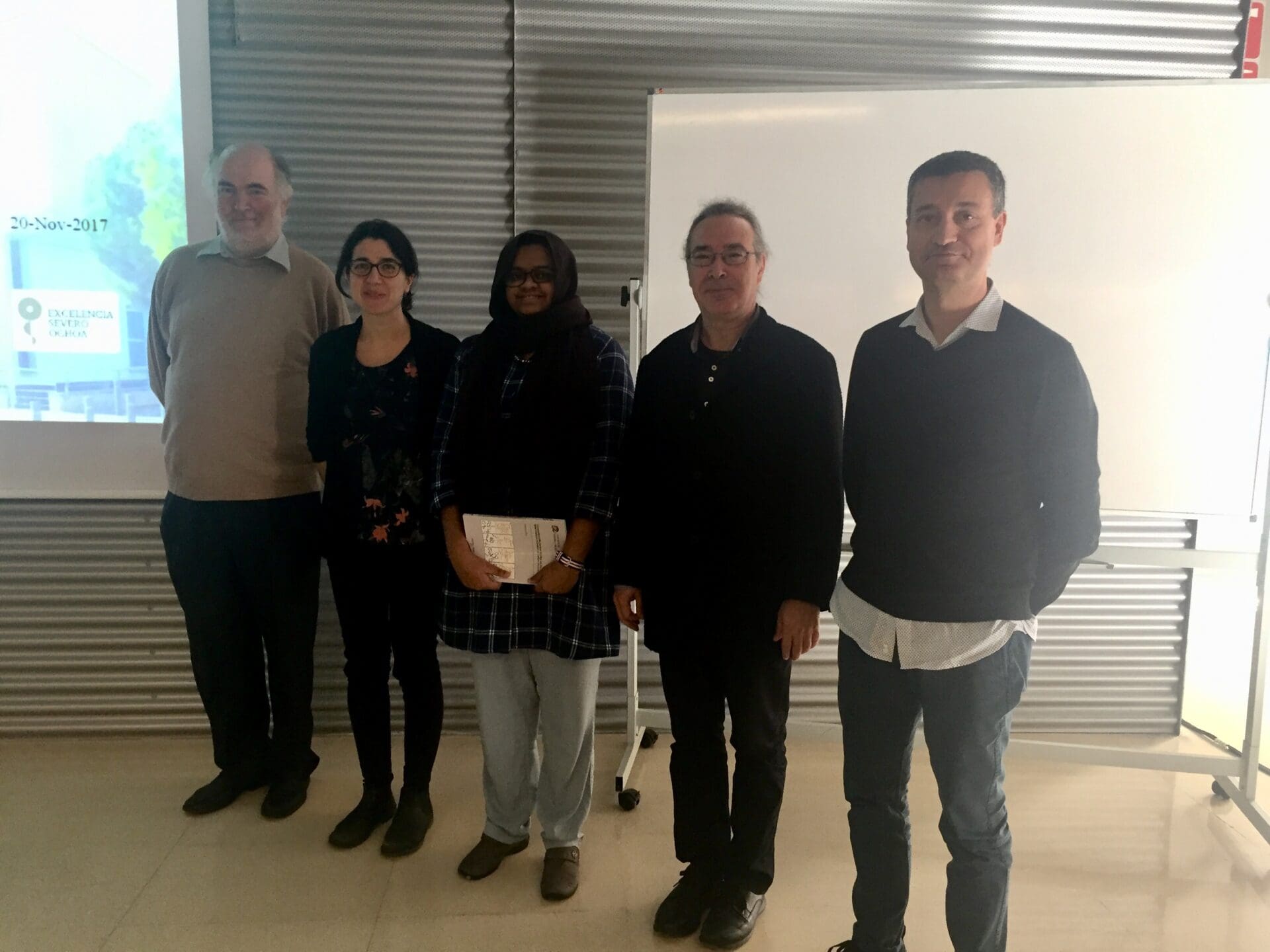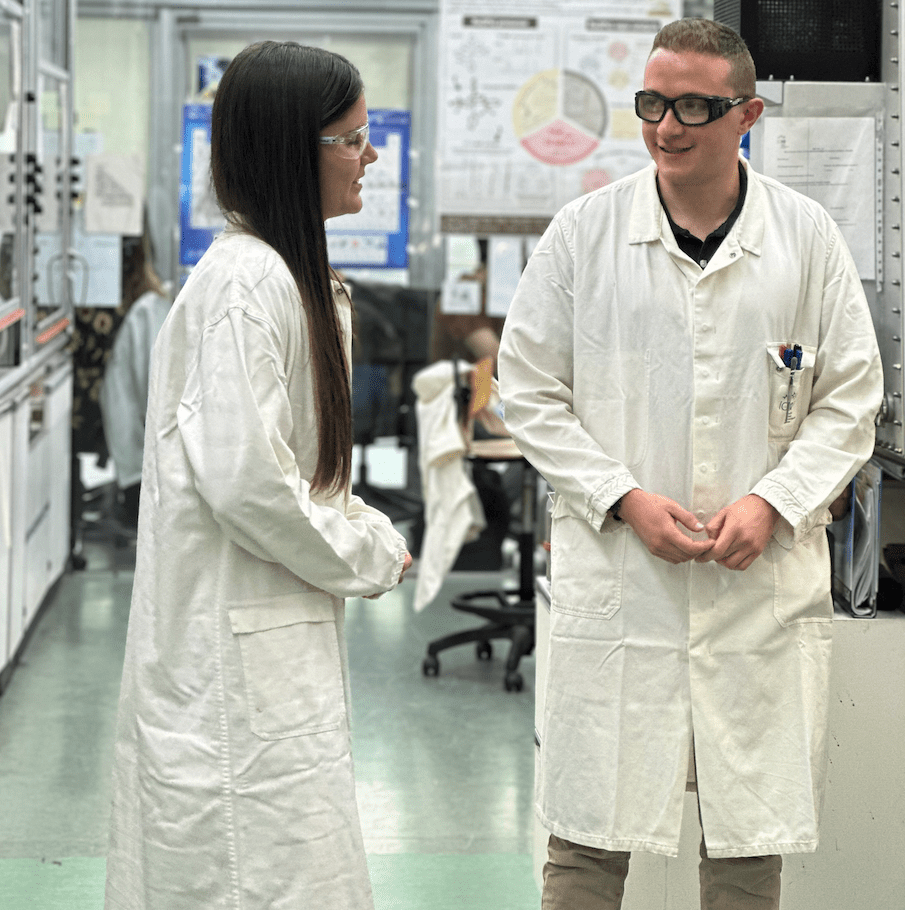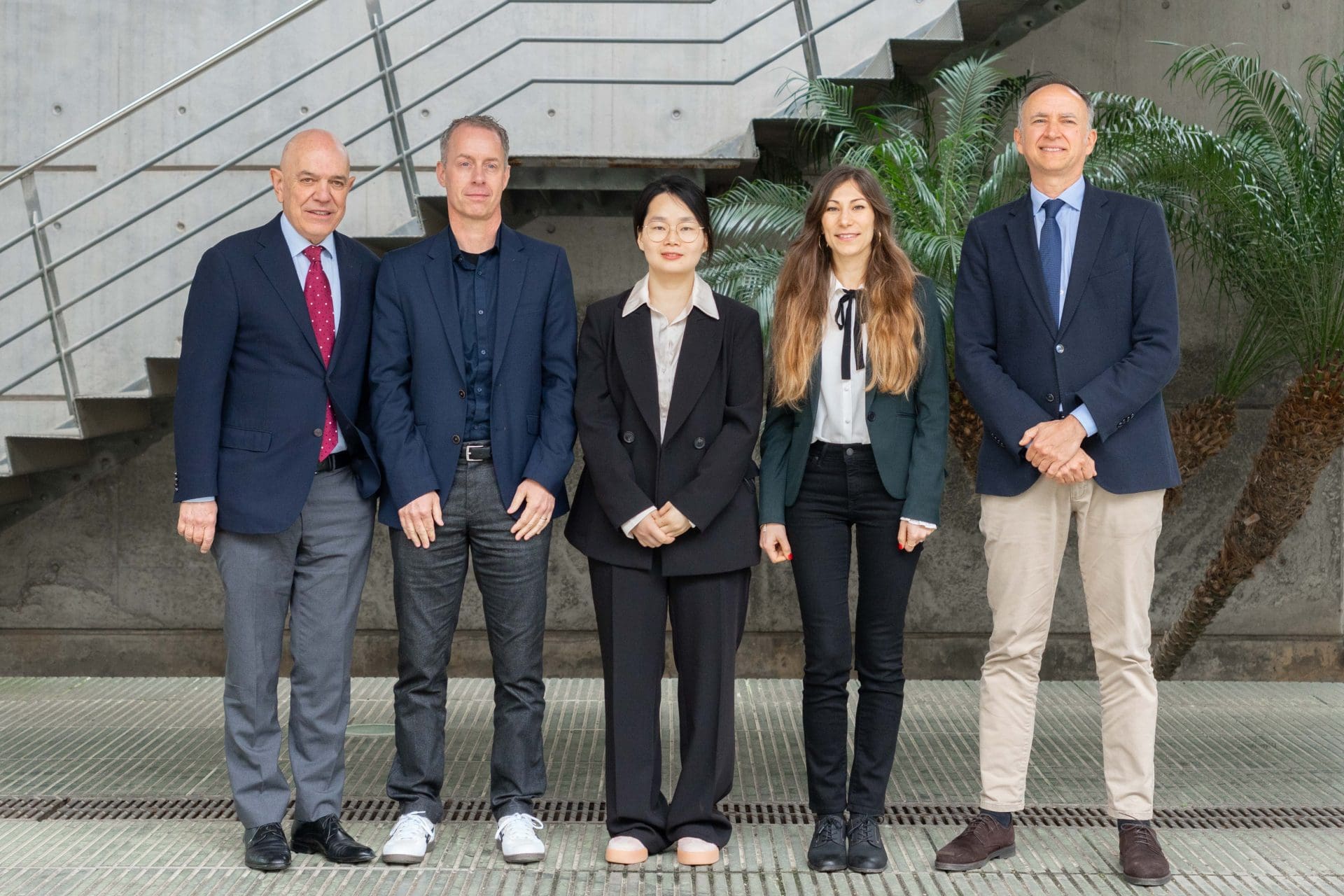New Doctor at ICIQ!
24th November 2017 -
Rositha Kuniyil, PhD student under the supervision of Prof. Feliu Maseras (ICIQ), has defended her PhD Thesis entitled “Computational Mechanistic Studies on the Transition Metal Catalyzed Activation of Carbon Dioxide” (assigned to the Physical and Inorganic Chemistry Department of the Universitat Rovira i Virgili) publicly on November 20th at the ICIQ Auditorium.
The members of the evaluation committee were: Prof. Carles Bo (ICIQ), Dr. Ainara Nova (Universitetet i Oslo) and Dr. Luís Rodríguez (Universitat Autònoma de Barcelona)
Abstract
The activation and conversion of carbon dioxide into organic products have attracted researchers over the years despite the high thermodynamic stability and kinetic inertness of this molecule. With the rise of new synthetic strategies for the CO2 activation, comes the need for mechanistic studies which can help the rationalization of the outcomes and thus enable improvements in the design of future reaction schemes. In this regard, computational chemistry has proven over time to be a powerful tool. In particular the computation of reaction pathways using Density Functional Theory (DFT) methods is an established method for mechanistic elucidation of regio- and stereoselective reactions.
In this thesis we set out to study the reaction mechanism for a number of transition metal-catalyzed reactions related to the activation of carbon dioxide. We chose a few landmark carboxylation reactions and also the conversion of cyclic carbonates, which are one of the important initial products from CO2 activation. We applied DFT methods combined with tools such as microkinetic modeling to clarify the mechanisms.
For the carboxylation reactions, we selected to study the mechanism of palladium-catalyzed allene carboxylation reaction and the conversion of siloxy silane to hydroxy acids. For the conversion of cyclic vinyl carbonates, we studied two reactions involving a decarboxylative approach catalyzed by palladium complexes. we analyzed the conversion of cyclic vinyl carbonates to allylic amines by using aniline as the nucleophile and we studied the behavior of the same catalytic system in the absence of the nucleophilic amine.
Related news

Let's create a brighter future
Join our team to work with renowned researchers, tackle groundbreaking
projects and contribute to meaningful scientific advancements







 14-03-2025
14-03-2025 















